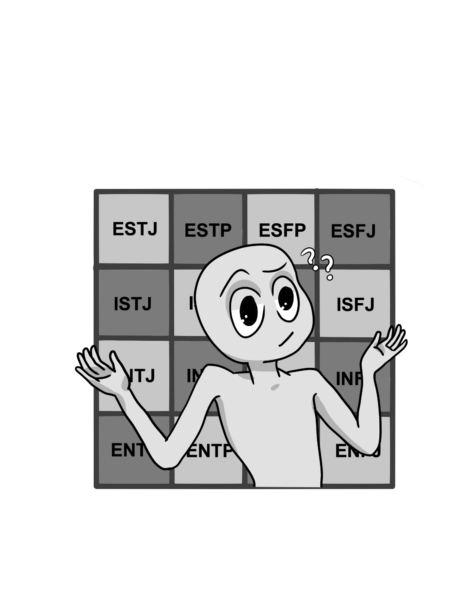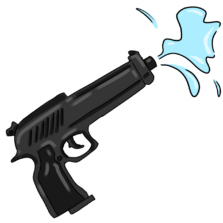
There’s nothing quite like scrolling through BuzzFeed to see what flavor donut or what percentage “VSCO girl” you are; it’s a silly yet exciting form of entertainment. Of course, you know it’s absurd, and so are other personality tests — they’re all a bunch of non-scientific, ludicrous nonsense … right?
Needless to say, I’m not going to try to defend BuzzFeed donut quizzes, but I would like to make a case for some of the more psychology-based tests online. One of these tests is the Myer-Briggs Type Indicator, otherwise known as the MBTI Test or 16 Personalities. You might recognize it from the centerspread the Aragon Outlook did a couple months ago, or maybe you’ve even taken the 16 Personalities test online. However you discovered MBTI, chances are, you probably overlooked its deeper meaning.
Most people’s first encounter with MBTI is through 16personalities.com. It’s a free online questionnaire that provides a four-letter “type,” like “ENFP” or “INFJ.” These letters stand for certain qualities: E (extroverted) or I (introverted), N (intuitive) or S (sensing), T (thinking) or F (feeling), and J (judging) or P (perceiving). The types come with much simpler and digestible names, such as “The Campaigner” or “The Architect,” to “match” the type it represents. These letters are determined based on your responses, which are on a sliding scale from Mostly Disagree to Mostly Agree, to the questions they ask about your perceptions, feelings and reactions to certain scenarios or ideas.
Finally, when given a four letter type, the test will also give you what percentage of each letter you are. Many people don’t explore the meaning of their results after receiving their four letter types. However, the letters alone don’t mean anything unless the cognitive functions behind them are analyzed.
Cognitive functions are defined as mental processes through which one perceives and interprets the world around them. Swiss psychiatrist Carl Jung theorized there were a total of eight different cognitive functions in his 1921 book “Psychological Types.” Jung believed that environmental upbringing and life experiences would shape and affect a person, but no matter what, they would still have innate ways of thinking and perceiving the world around them because of their cognitive functions.
The reason there are eight cognitive functions is each of the traits has an extroverted and introverted version. For example, the Feeling trait has Fe (extroverted feeling) and Fi (introverted feeling). The same goes for the other seven traits. However, no one has both introverted feeling and extroverted feeling; you either have one or the other.
Furthermore, everyone has four cognitive functions in their primary function stack. In total, you will have one feeling function, one thinking function, one intuitive function, and one sensing function. There is also an order in which the functions are stacked, the most dominant and developed going on top. The order of your functions, along with which functions you have, are what makes your “type.”
Because MBTI is based on Jung’s functions, the letters do not dictate your type. Instead, cognitive functions do. In reality, the letters alone are meaningless; it’s the cognitive functions behind them that matter. Since cognitive functions aren’t really your “personality” as much as they are how you perceive and interpret the world, they are much more accurate at explaining and typing human behavior. With Jung’s theories, no one is only Extroverted or only Introverted — everyone has two introverted functions and two extroverted functions. No one is just a Feeler or just a Thinker. Everyone has a feeling function and a thinking function, but one of them is just stronger than the other. Cognitive functions are incredibly nuanced and complex — just like people.
In truth, if you really want to discover your accurate MBTI type based on Jung’s cognitive functions, it’ll take a lot longer than a quick 10-minute quiz. The only true way to “type” yourself is to research the different functions or get professionally typed by a psychoanalyst. Obviously, there’s nothing wrong with taking the 16 Personalities test for fun; it just isn’t an accurate, comprehensive portrayal of MBTI.
So should you change your career path and goals in life because of a 10-minute online personality test? Of course not. Should you dedicate your entire life to discovering your “cognitive functions” some strange Swiss man came up with? Still, probably not. But should you use it as a helpful tool to analyze your flaws and better yourself as a person? Absolutely.





